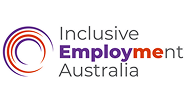
During mental health month, atWork Australia’s Principal Health and Wellness Advisor, Galit Bailey delivered a webinar on the topic of mental health conversations look different in different cultures.
She outlined just how broad culture can be, and how mental health can look different in different cultures.
Here are some things to consider when supporting someone from a different culture who may live with mental health conditions.
Culture is broad
Everyone has a culture. For example, Gen Z is a culture based on age group and lawyers are a culture based on profession. Some other examples of cultures can include first generation migrants, LBGTQI+ people and people of different faiths.
How does Depression, for example, look different in different cultures?
- Western Cultures: Depression is mostly focused on emotions including lack of pleasure, sadness and “acting in” with negative self-thoughts
- Indigenous Australians: Depression can be seen as a weakness of the spirit including worry or too much thinking. They may “act out” with impulsive actions
- East Asian Culture: Often have physical complaints such as tiredness, lack of energy and headaches
- Chinese Culture: Those diagnosed with Depression often say they are bored or have an inner pressure
These are just a few examples of how Depression is felt in different cultures.
With so many differences, how do we get it right?
By practicing Cultural Humility: The ability to maintain an interpersonal stance that is other-oriented (or open to the other) in relation to aspects of cultural identity that are most important to the person. Hook, J.N. (2013). Journal of Counseling Psychology.
Cultural Humility starts with the worker. It is a lifelong process of reflection, recognising and accepting own biases and assumptions around culture.
atWork Australia aims to be a culturally responsive service. With a set of behaviours, attitudes and policies aimed at working effectively in cross-cultural situations. Cultural competence involves awareness of cultural differences and integrating culture into our service delivery.
How can we be culturally responsive?
- Endorse cultural humility by exploring our own biases – reflect and challenge yourself
- Seek to learn, responsibly! Ask questions to learn but don’t interrogate
- Know your patch – refer people to specialised services. Know what culturally appropriate services are available in your area to refer to
- Local is best – or is it? For example, a local interpreter may seem like the best idea but in a small community, a client may know their local interpreter so this may break privacy, so a phone-based service may be best
- Culturally appropriate language such as simple language and short sentences
- Non -verbal language. Sometimes no eye contact can be a cultural sign of respect or part of a religious event. Embrace silence if it is needed
atWork Australia have a qualified team of Health and Wellness Professionals who provide a variety of confidential, client focused support services to help you improve the management of your overall health and wellbeing as you navigate your journey towards employment. Learn more here


